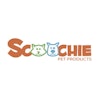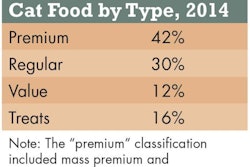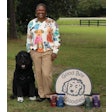A majority of US pet owners—nearly 80%—believe nutritional value is the most important factor in choosing a petfood, according to a survey by PetMD released in late January. This is no surprise, given how so many owners, especially in developed markets like the US, consider their pets full-on family members. (Hence the popular term “pet parents” so prevalent today.) The survey finding is also, for the most part, a positive for our industry.
On the downside, many pet owners struggle to understand what nutritional value is, let alone how to determine it for their pets among the dozens of product choices in the petfood aisle. The PetMD survey also showed that, while 60% of respondents say they read petfood labels, most are “unfamiliar” with the terms used in ingredients lists. Unfortunately, they are not likely to learn more about the terms—or about pet nutrition and how to determine nutritional value of petfoods—from most consumer-oriented, readily available sources, especially online ones. And that includes PetMD.
The website’s discussion of the survey findings include advice for pet owners from “our own veterinary expert,” Dr. Ashley Gallagher. Several of her recommendations are off base, in my opinion. For example: “According to Dr. Gallagher, the best information for choosing a quality petfood is the advice of a veterinary professional who knows the specific health needs of your pet.” Though I can’t argue that a veterinarian who regularly treats a pet is likely to know that animal’s health needs, the chances of the veterinarian also knowing much about pet nutrition or specific petfoods (other than the ones marketed in his or her own clinic) are not high.
Veterinarians in the US (and other developed markets, I’ve heard) just don’t receive much education on companion animal nutrition; at one leading veterinary school, its students have one course on nutrition during their entire veterinary study program. As far as I know, that’s the norm, even though it seems counterintuitive, particularly since pet owners often turn first to their veterinarians with any type of question or concern related to pet health, including nutrition. In fact, in the PetMD survey, more than 75% of respondents said they “always take their veterinarian's nutritional advice into consideration."
Then there’s the point that starts off with Gallagher saying she agrees with the 72% of survey respondents who rely on the quality reputation of the brand or manufacturer in choosing a nutritious food. No argument there. What I have an issue with are these accompanying comments: “Many of the new start-up brands actually do not have veterinary nutritionists on staff, nor do they have facilities to test the nutritional quality of their food through feeding trials with real pets,” explains Gallagher. “The established, trusted brands are also far more likely to have strong quality assurance programs in place to ensure the quality and safety of their products.”
Where to start with all the false assumptions? Yes, large petfood manufacturers are likely to have their own veterinarians on staff and their own facilities for testing nutritional quality of their products. But there are plenty of well-established petfood companies of all sizes that, for various reasons, outsource for nutritional expertise and testing—including brands that are often receive positive comments on consumer websites and high marks on sites that rank petfoods. (Ironically, some of those large companies with veterinarians and testing facilities on site are often disparaged on the Internet, whether or not that’s valid.)
Finally, speaking of outsourcing, that’s where Gallagher comes up with her most head-scratching advice and remarks. The recommendation is that pet owners should select a petfood that is manufactured “by the company or brand and not manufactured for them.” Gallagher’s comments: “I think it’s best to trust a company that makes its own food under the watchful eyes of its own employees to make sure the food meets the company’s quality standards, rather than trusting the safety procedures of an unknown manufacturer.”
I realize this lack of trust in contract manufacturing stems from the 2007 melamine-related recalls, in which dozens of petfood brands manufactured by one contract manufacturer (Menu Foods) were implicated. Thanks to our industry’s infamous lack of transparency, it was a complete surprise to consumers, veterinarians and media that many petfood companies and brands did not manufacture all their own products.
Unfortunately, that lack of transparency is ongoing, for the most part; thus, this distrust of any petfood products not manufactured in-house by the company whose name is on the package continues, too. I guess in that case, it’s not really fair of me to blame Gallagher for not knowing that many well-regarded, popular and perfectly safe and nutritious petfood brands and products (again, some of which are highly ranked on petfood ranking sites) are made by contract manufacturers. Or that some contract petfood manufacturers are industry leaders in product safety and quality, often investing millions of dollars in state-of-the-art equipment, processes and employee training.
As with pet nutrition in general, our industry is missing a huge opportunity to educate consumers and veterinarians. No doubt it is a colossal task, and some people will automatically ignore or disregard information coming from the industry or petfood companies as self-interested and not credible. But is the lack of information available to pet owners and vets—or the amount of misinformation—really a better problem to have?


















